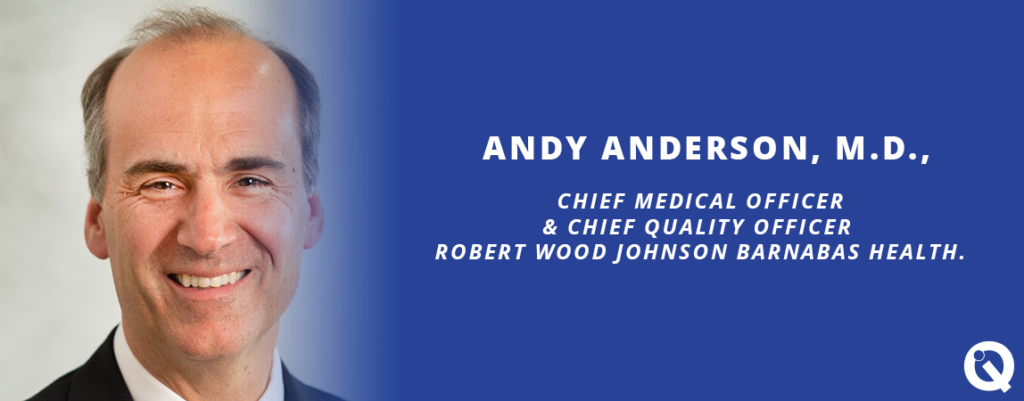Andy Anderson, M.D., is the Chief Medical Officer and Chief Quality Officer for Quality Institute member Robert Wood Johnson Barnabas Health.
Where do you think you can make the biggest impact in your new role as Chief Medical and Quality Officer for RWJBH?
The mission of our health system is to achieve healthier communities. And to do that, I believe we must engage our patients at the individual level in their own health and health care. And we also must engage our employees and have them excited to deliver the best possible care to our patients and communities. We want our communities to have better health, and that translates into more productivity and more economic development across our state … that translates into more wellness and happiness.
I can say that as an internist, and primary care provider, I continue to take care of patients and see those outcomes around me. This gives me insights and real-world experience with patients. And it’s part of who I am as a physician — the work brings me joy and satisfaction.
What is your top priority for 2023?
It’s about getting to exceptional outcomes for patients. I believe that every person deserves an exceptional outcome, and everyone deserves the attention required to help them get to those outcomes. Part of that is the experience people have while they are in our health system — and part of that is the actual result of their care. And sometimes that’s preventive care. Sometimes that’s treating acute illness. Sometimes that’s treating chronic illness. Getting everyone exceptional outcomes is my number one priority.
If you had to name one specific strategy that you think is underutilized when it comes to driving safety and quality, what would that be?
I think we need to engage the frontline employees and staff more than we historically have. I think at the point of care is where the important decisions are being made that impact quality, safety, and the patient’s experience. And so having all our doctors and nurses and all of our staff who are interacting at the frontline — having them be more engaged and excited and empowered to make the right decisions — that’s the secret sauce, if you will, to getting the best outcomes.
How are you focusing on health equity as an integral part of quality improvement?
The first step is measuring equity outcomes and reporting them transparently. Historically, we haven’t done a great job at reporting on disparities in health care. So, measuring outcomes in areas such as race, ethnicity, gender, and reporting that data is step one. And then step two is closing gaps and having discrete initiatives to address those health inequities. An example is screening mammography and looking at race and ethnicity and understanding that certain ethnicities and races haven’t been receiving screening mammography as often as others, and then going to solve the problem by providing easier access for people.
We like to ask a question beyond a person’s professional life. How might we find you when you are away from work?
Spending time with family, my wife and three children, two sons and a daughter. We enjoy traveling to places such as Europe and to all parts of the United States. Seeing different places and experiencing different foods, different cultures is where you might find me.

